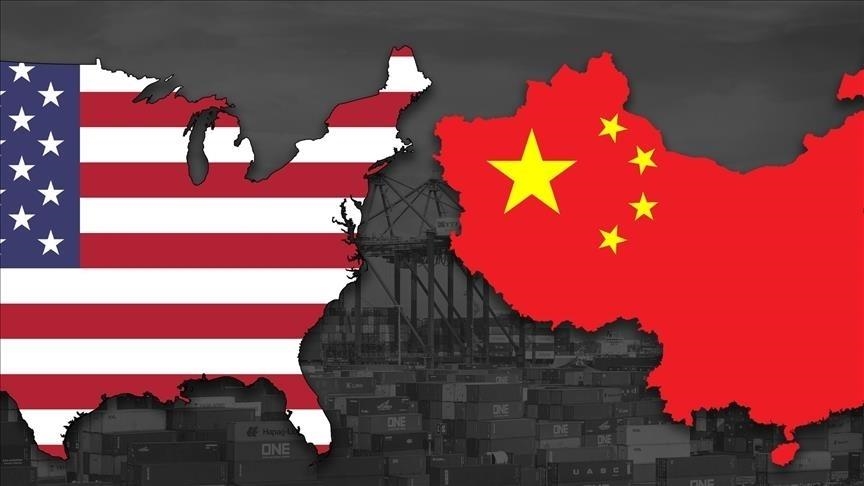OPINION - From harsh rhetoric to pragmatic compromise: The contours of current US-China economic relations
Since his return to the White House, US President Donald Trump has made stymying China’s export-driven and manufacturing-based growth strategy a central focus of his international economic agenda

The author is the head of Economics at Greater London Authority and Policy Fellow at the University of Cambridge.
ISTANBUL
According to the World Bank, in 2023, the United States and China collectively represented 43% of the world’s GDP, 21% of global trade exports and 23% of global imports. These numbers uniquely crystallize the importance of both countries to the international economic order, whose very foundations have been challenged to a great extent by the tension between the two superpowers.
Since his return to the White House, US President Donald Trump has made stymying China’s export-driven and manufacturing-based growth strategy a central focus of his international economic agenda, while simultaneously intending to revive American manufacturing and export dominance. Back in March of this year, President Trump levied a series of tariffs targeting China (amongst other countries), including specific industries such as steel and aluminum. The tariff rate levied on China reached a dizzying height of 145%. Meanwhile, China retaliated with its own tariffs on US imports and products, which reached a high of 125%.
The harsh exchange of rhetoric and tariffs eventually gave way to pauses, delays, exemptions, and negotiations — including with China — for new trade deals. This prompts the question: why the sudden change in direction?
To understand the reasons, it is worth highlighting that the main objectives of President Trump’s trade policies (which include his tariffs) are:
- Reducing the US trade deficit with the rest of the world in goods. In other words, ensuring that the value of goods imported by the United States does not exceed the value of goods the US exports.
- Restore the US’ atrophied manufacturing and industrial base.
- Slow and frustrate China’s economic progress.
Why tariffs failed to fix the trade deficit
Economic theory and historical precedent put in question the idea that tariffs could reverse the existing trade deficit over time. The key reason why the US has a trade deficit in goods is because Americans tend to spend and consume more than what they produce. The US currently has a $36 trillion debt (and it continues to increase), and its households have relatively low saving rates. Tariffs were unlikely to address this issue and were always likely to provoke retaliation from countries such as China. As a consequence, the US’ own exports could reduce over time, which would reinforce the deficit (other things equal).
In fact, the US-China Business Council (USCBC) did a study on the effect of President Trump’s tariffs on China during his first term, and it showed that those tariffs ended up costing the US up to 245,000 jobs [1]. The tariffs on Chinese goods did nothing to address the fact that China runs a huge trade surplus due to its lower-than-expected domestic demand, an issue that continues to the present.
Furthermore, on April 11, President Trump also announced an exemption from tariffs for all imported smartphones, computers and other electronics (including those produced in China). To understand why, consider that the skills needed to put together a product as complex as an iPhone are not widely distributed in the US, a country whose manufacturing base has been hollowed over time. Global supply chains are more integrated than ever and it is virtually impossible to rupture them without considerable self-harm. For example, an iPhone alone integrates components from 43 different countries! Continuing with the high tariff policy would have meant American consumers facing significantly higher prices for iPhones and laptops. It is also worth noting that China holds at least $750 billion of US debt at a time when the national debt is substantial and yields on Treasury bonds remain relatively high by recent historical standards (i.e., the past decade). Should China choose to 'dump' its bond holdings (even if slowly), yields would start rising and the US would find it difficult to finance its $36 trillion debt.
These considerations prompted the US to pragmatically negotiate a deal with its chief economic rival, which has led to a reduction in tariffs and reassured investors and governments unnerved by the economic uncertainty. While the agreement did not fully eliminate the tariffs both countries levied on each other, it reduced them while keeping open the possibility for further talks and future deals on trade and economic relations.
What this episode demonstrates is the complex nature of contemporary trade links and supply chains. Economists have spoken in recent years of a growing 'decoupling' as the US and Western countries seek to re-shore production to improve economic resilience and preserve access to strategic minerals and materials. In a post-Cold War environment that is deeply globalized, this is an arduous task to accomplish without inflicting considerable economic self-harm. Last but not least, this episode provides a strong reminder that trade is not necessarily a zero-sum game, and that diplomacy is a virtue that could produce many winners and no losers.
[1] https://www.reuters.com/article/business/energy/us-china-trade-war-has-cost-up-to-245000-us-jobs-business-group-study-idUSKBN29J2O9/
*Opinions expressed in this article are the author’s own and do not necessarily reflect Anadolu's editorial policy.
Anadolu Agency website contains only a portion of the news stories offered to subscribers in the AA News Broadcasting System (HAS), and in summarized form. Please contact us for subscription options.







